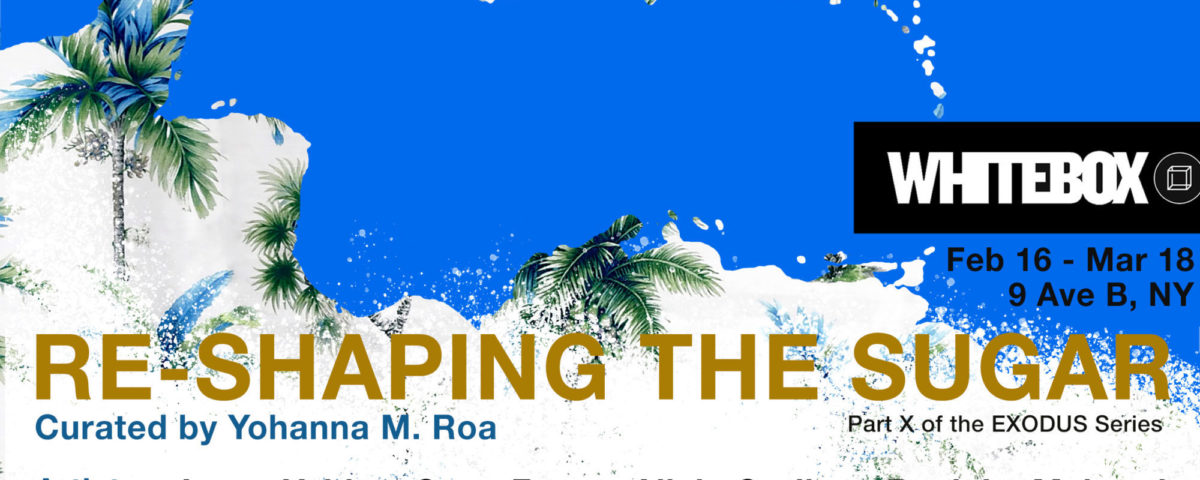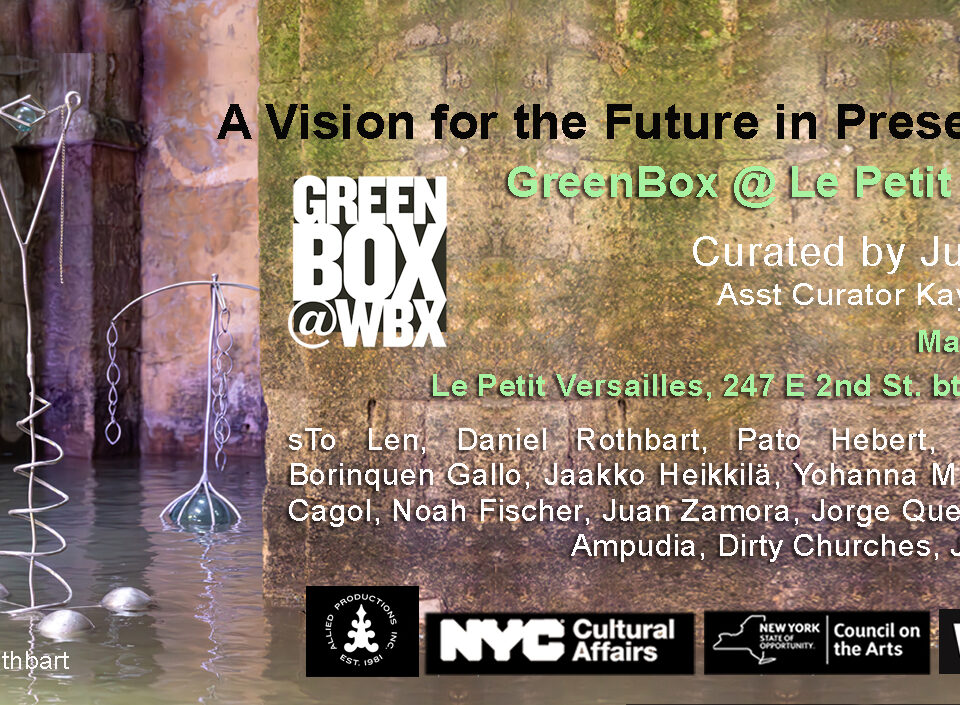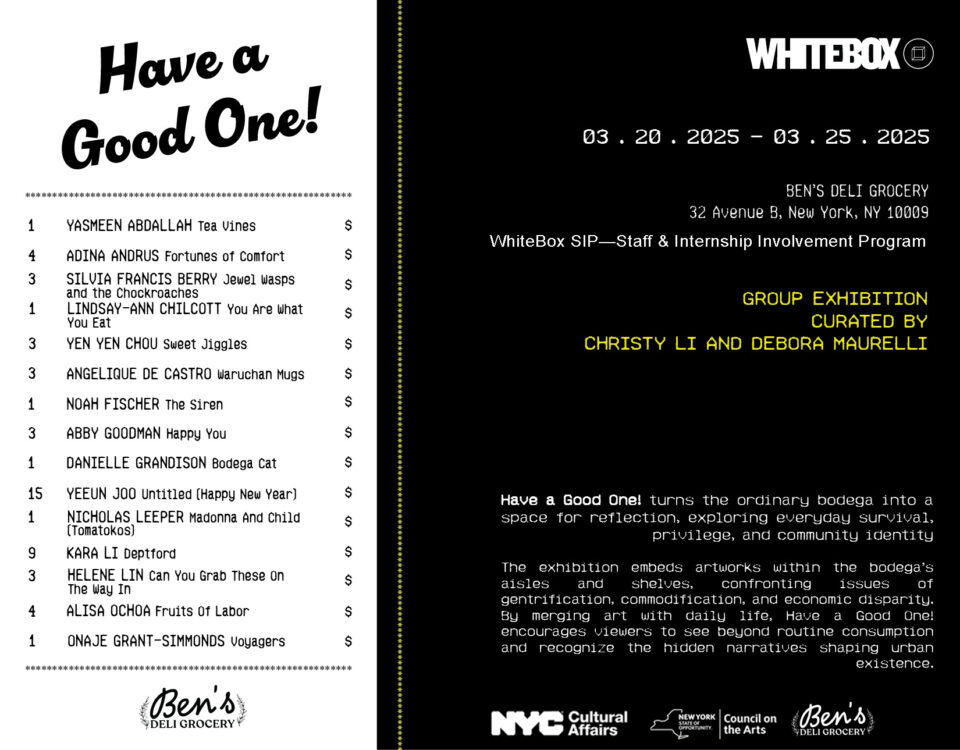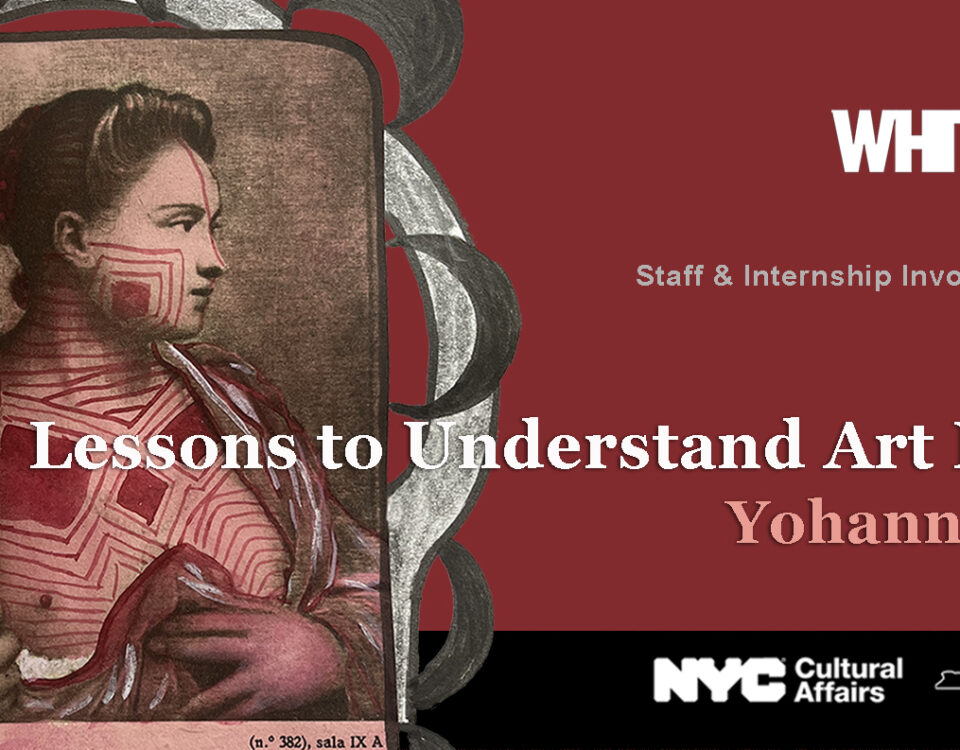
Earth Day + Off The cloth
January 10, 2023
SUMMA
March 19, 2023Re-Shaping the Sugar
February 12 – March 18, 2023
Opening Reception: Thursday, February 16 at 5-7 PM
By Yohanna M. Roa, curator
As seen in WhiteHot Magazine by By ERIN L. MCCUTCHEON PHD (Review)
The first translation of the word Caribbean into a European language dates back to 1492, found in the journals of Christopher Columbus. From his gaze facing the incomprehension of a culture alien to his, having a completely different perspective of the world, Columbus mistakenly decided to name cannibals all inhabitants of the lands we now call The Lesser Antilles. The process of creating the Caribbean is confusing and contradictory, and full of contrasts subject to the geopolitical changes that have occurred over the last 500 years. Within the framework of Black History Month, WhiteBox Presents “Re-shaping the Sugar”, an exhibition that investigates the Afro-Latin roots present in the memory of ‘Black America’. The show includes the work of seven relevant Caribbean artists based in New York City, Juana Valdes, Coco Fusco, Alicia Grullon, Renluka Maharaj, Jodie Lyn-Kee-Chow, Joiri Minaya and Jacqueline Herranz-Brooks. Their exhibited works challenge the historical, geographical, and political delimitations of what we call “Caribbean”.
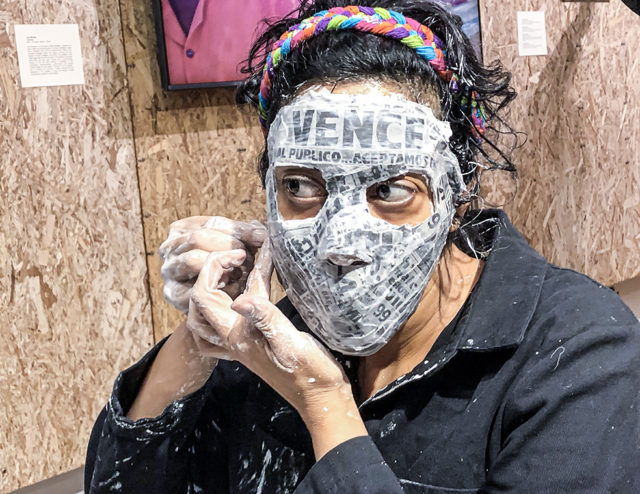
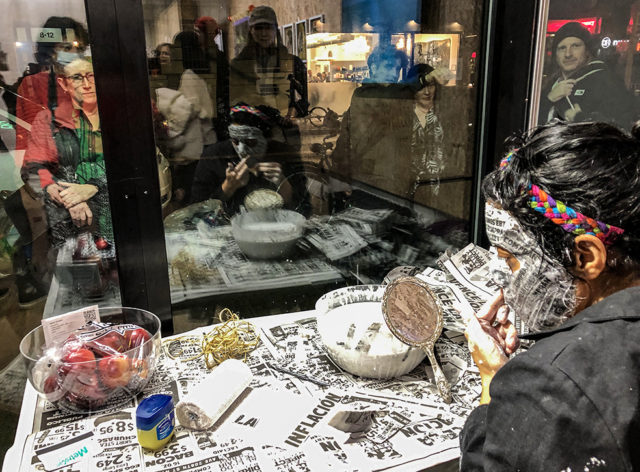
Alicia Grullon
Revealing New York: The Disappearance of Others
Opening Performance-Intervention. 2023/2008/2010/2015
In response to gentrification and the housing crisis, Grullón tried to sell one-pound bags of rice, flour, and beans for $3000, $5000, and $1000. At the same time, Grullon masked my face with the real estate section of the New York Times.
Of the multiple ideas that flutter around this territory, outstanding: imperial border, colonial past, slave-owning haciendas, tourist lands or paradise for multinationals and off-shore banking, making it evident that the Caribbean is a construct forged in the discourses of a socio-historical process regarding this sea, its territories and the bodies that inhabit it, external agents having intervened pushing forth such transformation. The works in this exhibition abruptly look at and shake up the region’s current situations linked with the historical trajectories that constitute them. From a decolonial perspective, they rearticulate the relationship between word and image, reconnecting memories and bodies that colonial thought have separated.
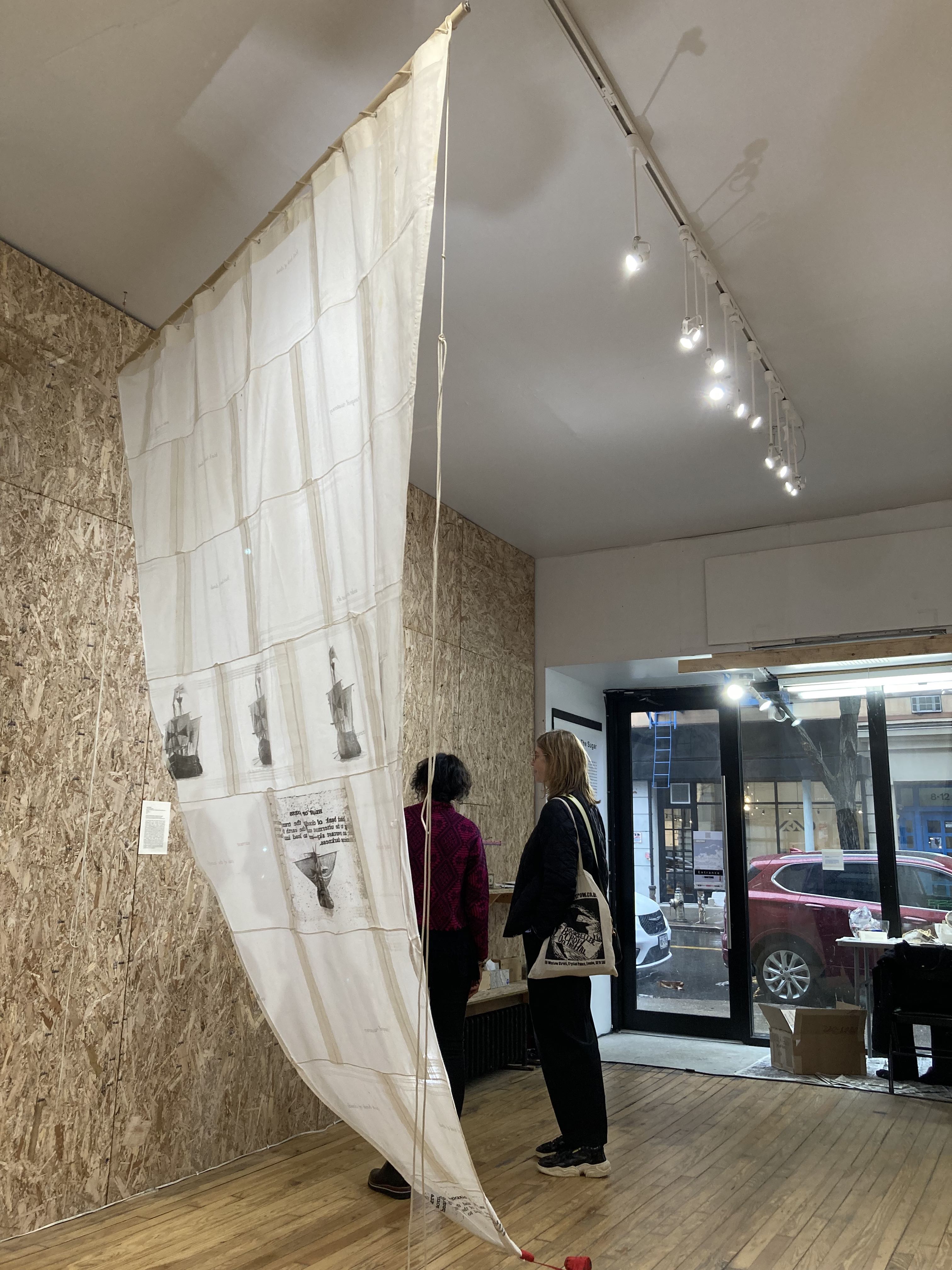
“Tranquil Waterways”
Mixed media (Silk-screen, letterpress handkerchiefs sewn together)
10’ x 86”x 3’
The Cuban born artist Juana Valdés examines the post-colonial history of the Americas and the current representation of Latinos, Caribbean citizens, Blacks or what the current “Other” is in vogue in the mainstream America reflecting on what is ascribed, contested, and granted. The exhibition includes her installation “Tranquil Waterways’, the work is made of screen-printed white cotton handkerchiefs. The sail is glued with paper and sewn together from white men’s handkerchiefs, shaped like a Jib. The screen-printed are images of Spanish Galleons reproductions of the ships that sailed across the Atlantic in the discovery of the Americas. The invention of these large ships and sails ushered in the New Age of Exploration in the fifteenth century. This age of Empire, followed by centuries of Colonialization, construed the hierarchy of races and the history of exploitation that marks the Caribbean, South, Central, and North American peoples. Letterpress text from Joseph Conrad’s Heart of Darkness is presented in tandem with the ship referencing language and literature and its connection to that history. The artwork addresses issues of social transculturation and its effect in the Americas over the past century, from Imperialism to the failure of colonization and the slave trade. In addition, it reviews the relationship to travel, commerce, and place from a Latinx perspective.
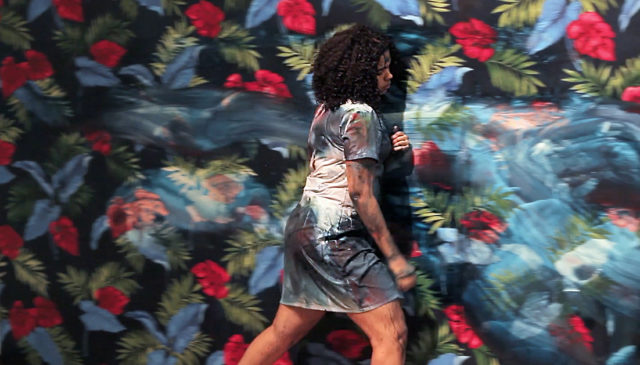
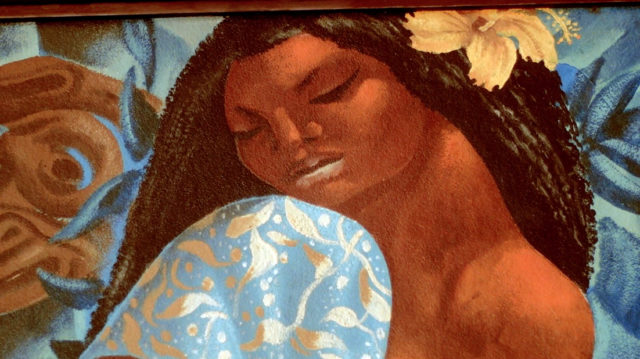
Joiri Minaya
Siboney
2014, HD video, sound, 10 min.
Joiri Minaya is a Dominican-United Statesian, she presents “Siboney” and Labadee (HD videos). “Labadee” is a short video documenting parts of a Royal Caribbean cruise trip in Labadee, Haiti, and the dynamics that unfold in this privately-managed space (the space is fenced off and leased to Royal Caribbean until 2050). The subtitles in the video begin with text from the diary of Christopher Columbus when they first saw land, moving into a contemporary recount of the trip we’re seeing. “Siboney” is a 10 min adaptation of two performances and a mural painting. The video documents the process of copying a tropical pattern from a found fabric on a museum wall. After around a month of work, she wet her body and rub against the wall, transforming the mural, while the song Siboney by Connie Francis is playing. The video questions the exoticism in the representation of black and brown women in the Caribbean and challenges these constructions, questioning who has had control over representation of Others historically, and reclaiming the voice of the black / brown Caribbean woman who speaks for herself through the work.
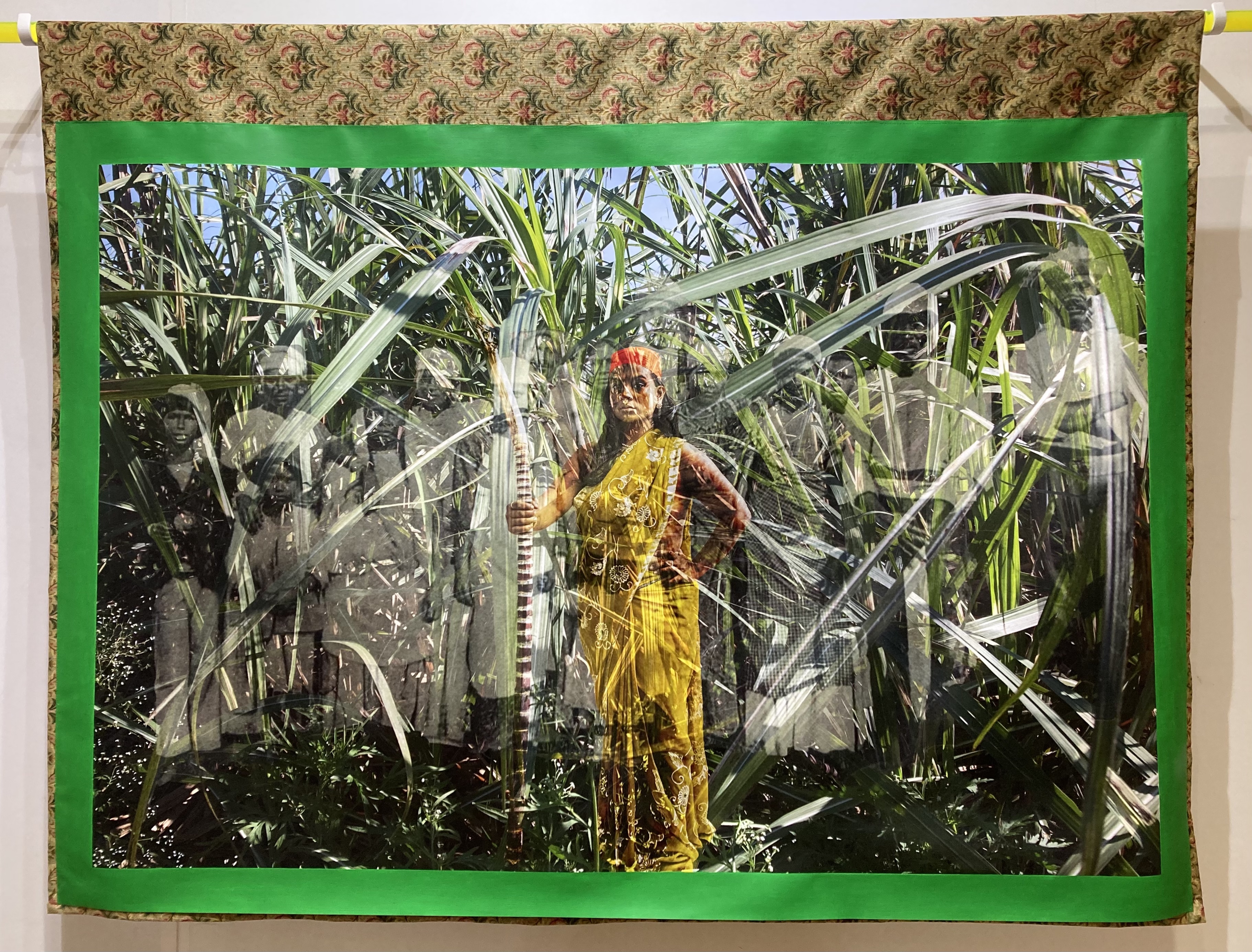
Chandika 2022
Pigmented Ink Print on Canvas, Cotton Fabric, Acrylic Paint and Marker, Coloring Pencils, Acrylic Rod and
3-d Printed Finial 50 x 37 in
Starting in the mid 1800s, indentured laborers from India were sent throughout the globe as a substitute for slave labor. Renluka Maharaj’s grandparents entered Trinidad and Tobago as indentured laborers to continue working on sugar plantations, this fact has been a point of departure for the artist’s ongoing dialogue and research. The work “Bhumi’s Daughters” carries out an exercise focused on archival practices, through the use of her personal story and historical photographic documents, she recovers the memories and corporality of South Asian women who crossed oceans during the 19th and 20th centuries to work in servitude.
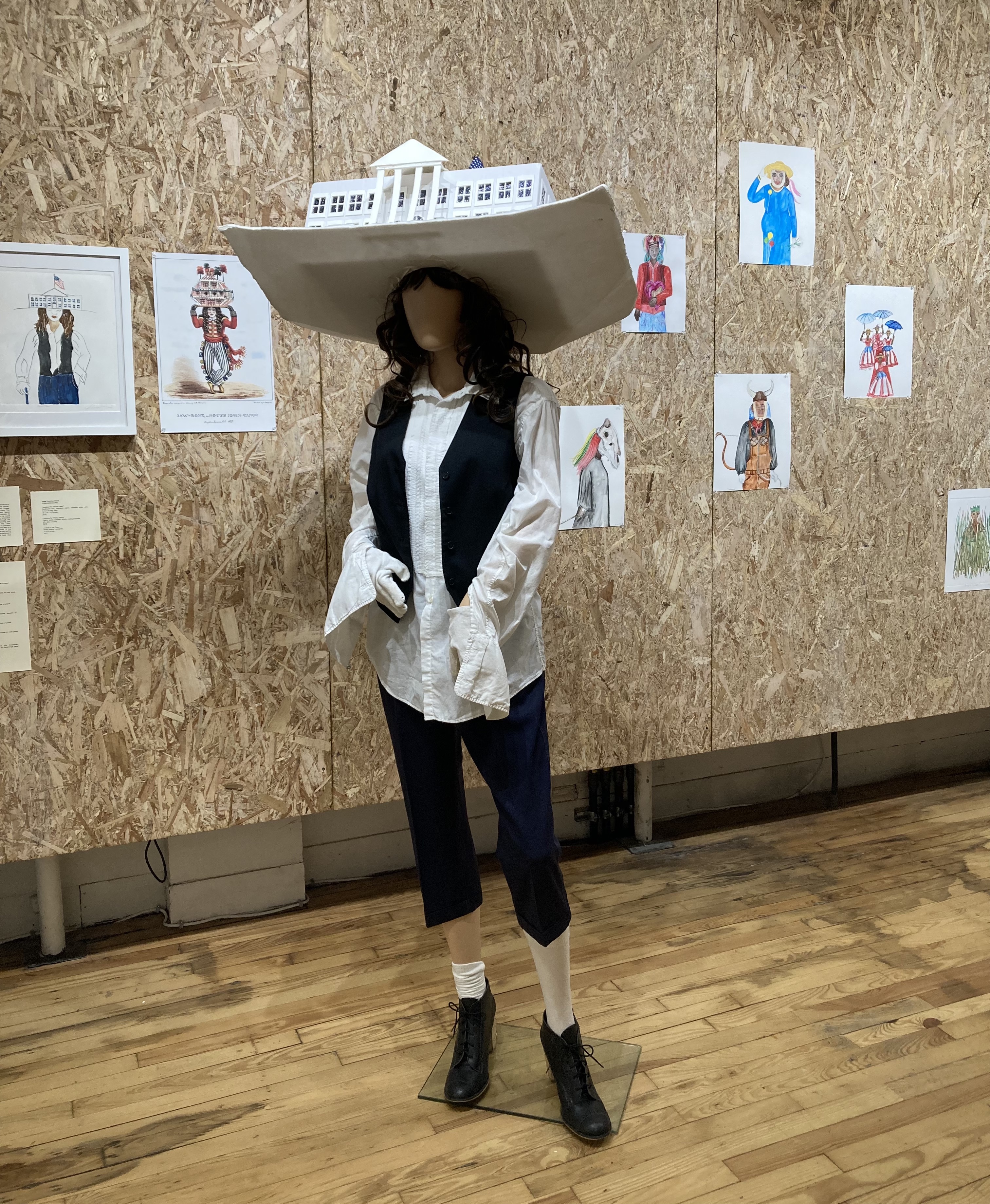
JUNKANOOACOME
Installation
Jodie Lyn-Kee-Chow was born in Manchester, Jamaica to a Chinese-Jamaican father and an Afro-Jamaican mother. The African diaspora, European colonialism and Chinese migration make-up significant parts of her origins story. The ancestral convergence in Jamaica (slave owners, slaves and migrant workers) followed her family’s immigration to the United States informing her artistic practice. In her recent work, she has been exploring the American landscape through research on historical landmarks. Through her immigrant lens, she engages with it by questioning how colonial narratives are constructed. Her work “Junkanooacome” draws on the “John Canoe” or junkanoo parade, a satire-laden masquerade and ceremony akin to a carnival held after Christmas in some places of the Caribbean. The tradition began in the region as early as the 17th century when enslaved African participants gathered in costume to celebrate a rare day off and mock their enslavers.
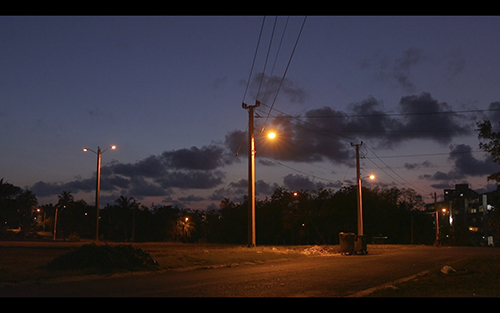
Coco Fusco
La botella al mar de María Elena
The Message in a Bottle from María Elena
Video, Color, 44 min, 2015
The Cuban artist Coco Fusco’s art practice concerns colonialism, power, race, gender, and history. To dislocate these phenomena she involves her body, meanings and influences in the construction and control of memories and identities. “La botella al mar de María Elena” (The Message in a Bottle from María Elena) is a video work about the case of Cuban poet María Elena Cruz Varela, winner of the 1989 National Poetry Prize. In 1991, she spearheaded an effort by ten Cuban intellectuals to issue a public declaration calling for political reforms. The Declaration of the Cuban Intellectuals alluded to the critical situation that Cuba faced with the dissolution of the Soviet Union, the fall of Communism in Eastern Europe and the dramatic drop in imports and trade. Cruz Varela and several other dissidents were sieged by mobs and arrested for their efforts. In the video, Fusco contrasts the poet’s recollections of the events with those a Communist party militant who was involved in the mob attacks.
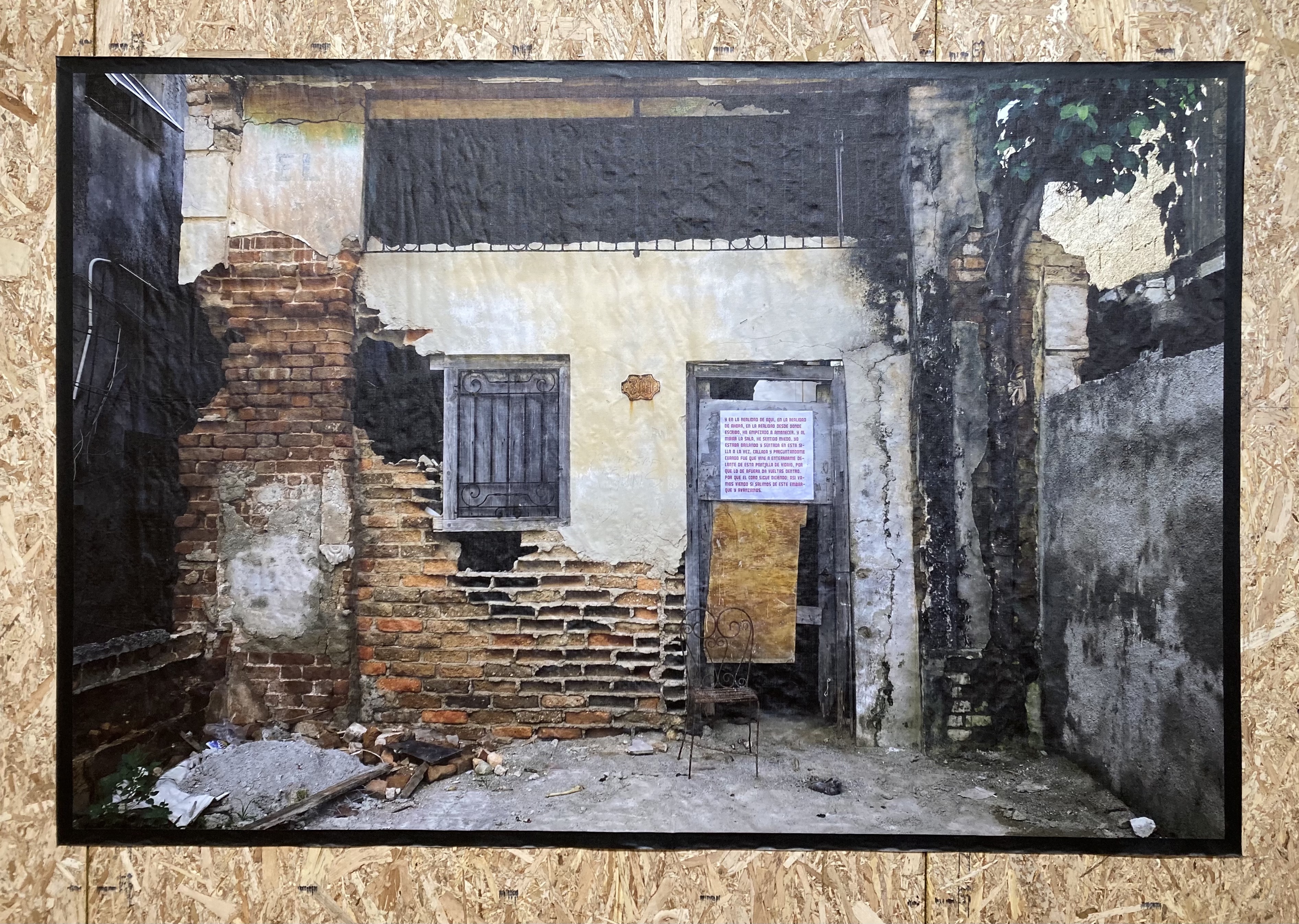
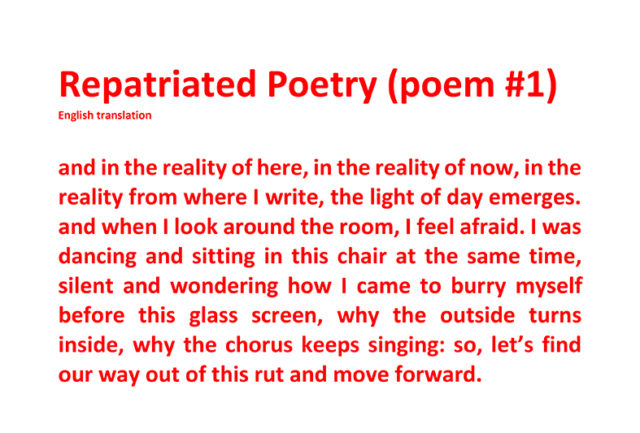
Jacqueline Herranz Brooks
Contested Territory: Poesía Repatriada. (2018-2020)
Color Photograph on Vinyl, hardbound artist’s book (8×10), color printouts, and video.
Jacqueline Herranz Brooks, presents “Contested Territory: Poesía Repatriada”, a Color Photograph on Vinyl, hardbound artist’s book, color printouts, and video. It is an urban-intervention, street poetry project centered around the Cuban repatriation process she undertook, at her mother’s request, beginning in the summer of 2018. Contested Territory: Poesía Repatriada consists of her “repatriating” two poems she wrote in her present home in Queens, New York, to Havana (her birthplace and home until 1999) and pasting them in abandoned places that are integral to her memories of being a queer, marginalized, homeless artist in Havana during the late 1990s. Each intervention questions ownership of space and my efforts to claim them as my own.
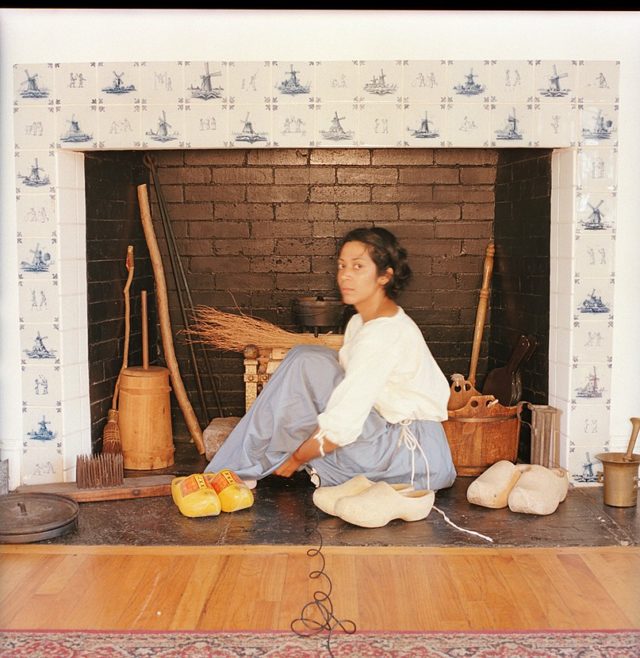
Alicia Grullon
Unsettling the Post-Colonial Condition of my Being
L-R: Laughing Cavalier, Woman Holding a Balance, Portrait of a Lady
Traditional C-Prints, each 13″ x 13″ (20” x 20” framed). 2016
“Unsettling the Post-Colonial Condition of my Being” of Alicia Grullón is a site-specific portrait series. Initially executed for the exhibition Appropriating Revolution at the Old Stone House (2016), Grullón was intrigued by the fact that the Dutch golden age in art and culture occurred at the same time that Old Stone House in Brooklyn was originally built, where slaves were held, and 150 years after the island of Kiskeya/Hispaniola, where her family is from, had been colonized. Grullón says “All these moments in time seemed to converge in my body…In these images, I want to find ways to intersect points in history with my being a woman of color from New York City.” The title of each photograph is the title of a famous Dutch Master painting created while New York City was still New Amsterdam, with related costumes.
A singularity of the exhibition is that these artists have based themselves in the city of New York in such way that their life experience is an intersection in which the here and there converge to constitute a new territory, which becomes a Caribbean, but situated in this mass of concrete and skyscrapers. In this way, in their works, the bodies operate as documents that dialogue with archival material, whether historical or storytelling.
“Re-Shaping The Sugar” questions the traditional notion of a single Caribbean, making it clear that there is no precise definition for it, on the contrary it is a complex and diverse, multiracial, multilingual and transnational region. We have multiple Caribbeans defined by historical, political and geographical contexts with a high degree of flexibility in terms of identity and intense diasporic movements. Memory, body, identity, and personal stories are interwoven to reshape and shake up that sugary idea of a territory that, due to its strategic geographical location, has been tirelessly tried to be tamed for 500 years.
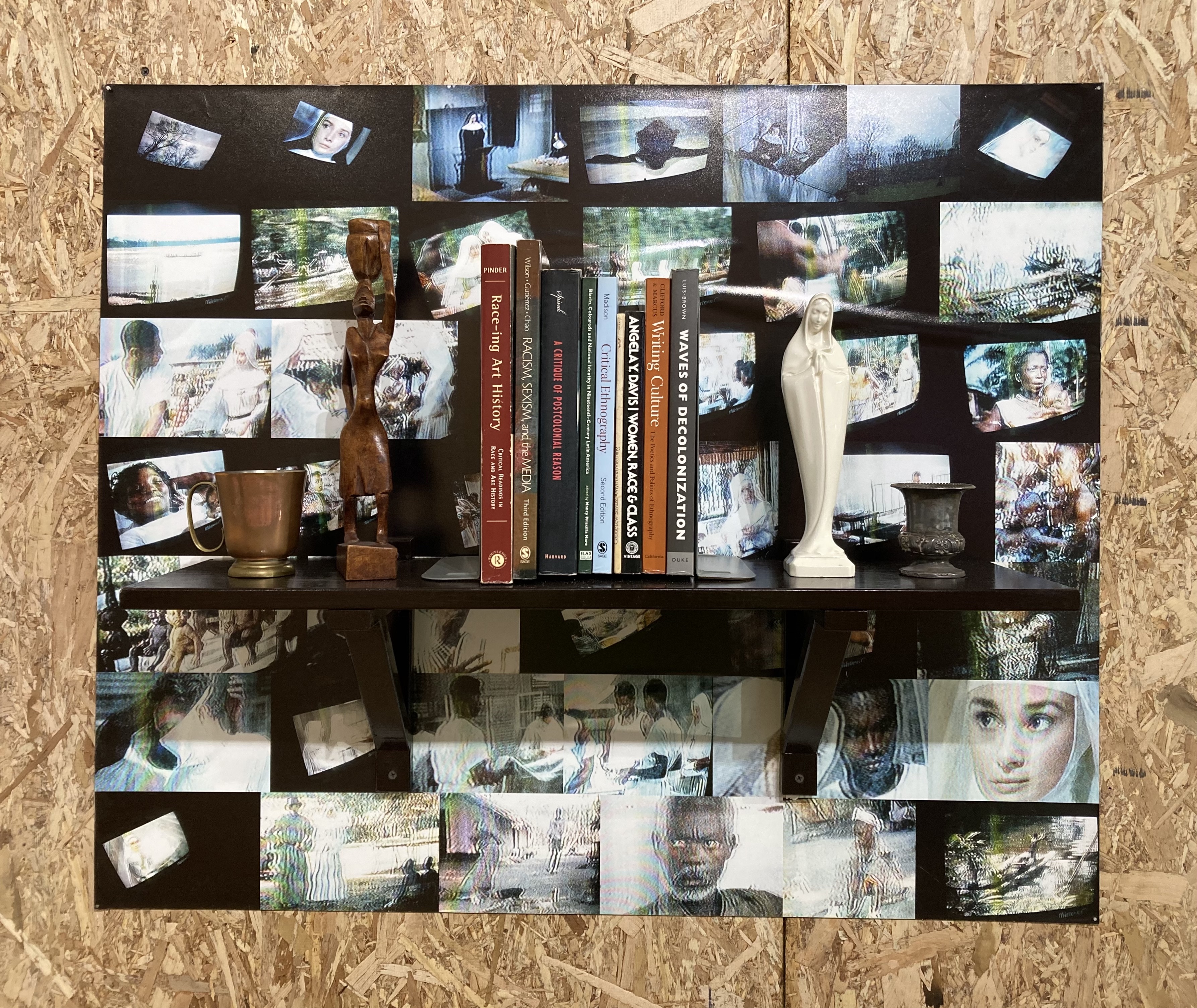
“Visual Literacy”
Mixed media: film stills, books, brass chalice, wood, and brass candle holder
28” x 36” x 9”.

